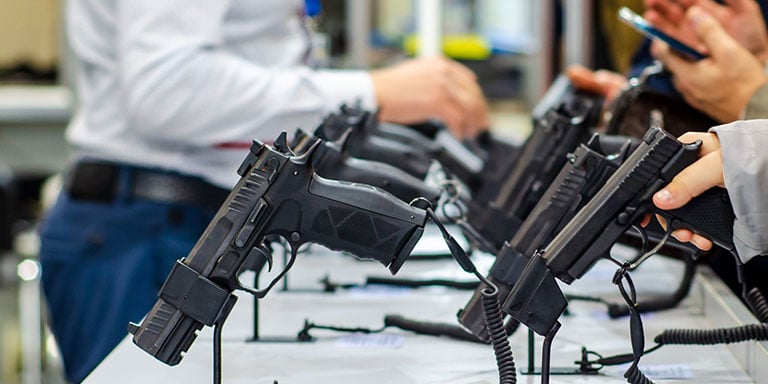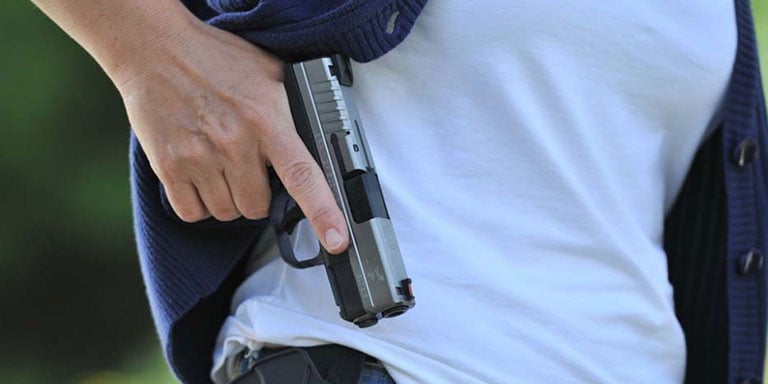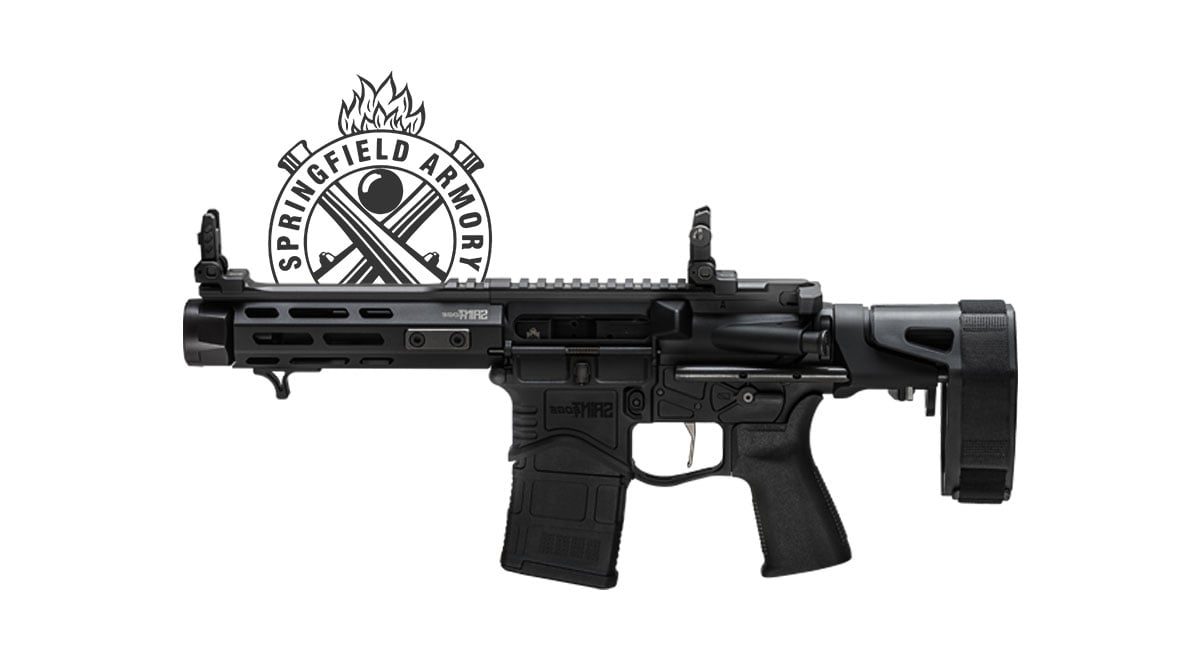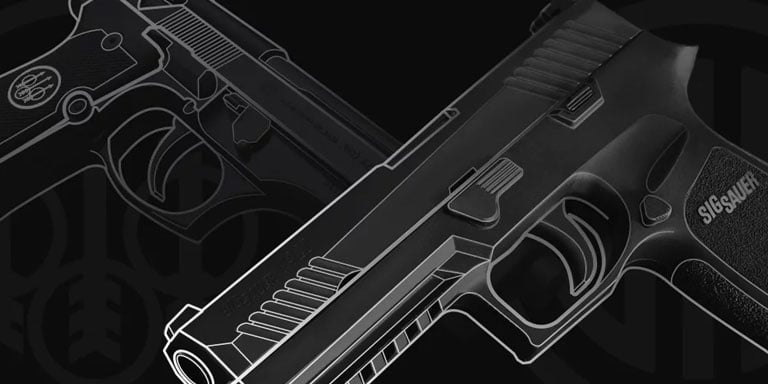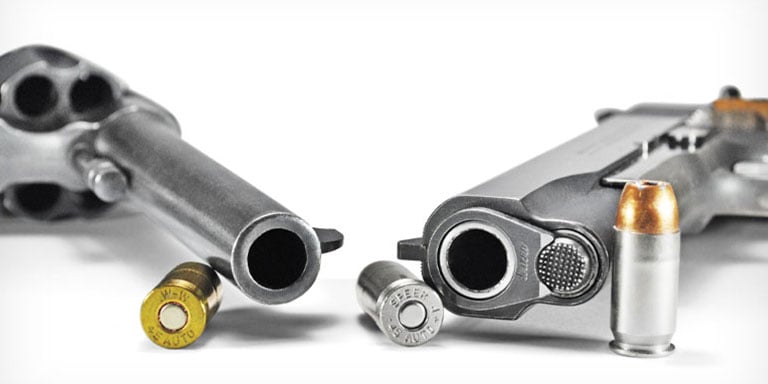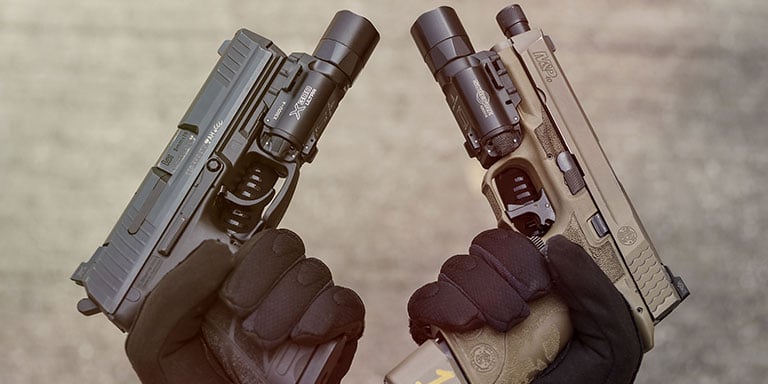
Handguns fire when a firing pin strikes the primer on a bullet in the chamber. The firing pin can be struck by either a hammer or a striker. Each type of mechanism has its share of fans and detractors, though the debate isn't quite as old (or intense) as the one surrounding revolvers and semi-autos.
In this guide, we'll review the differences between hammer-fired and striker-fired handguns. We'll also weigh their pros and cons to help you decide which is right for you (if you don't have a favorite already).
Mechanical Differences
The differences in how these two kinds of handguns operate are subtle, but subtle doesn't mean insignificant.
Hammer-Fired Guns
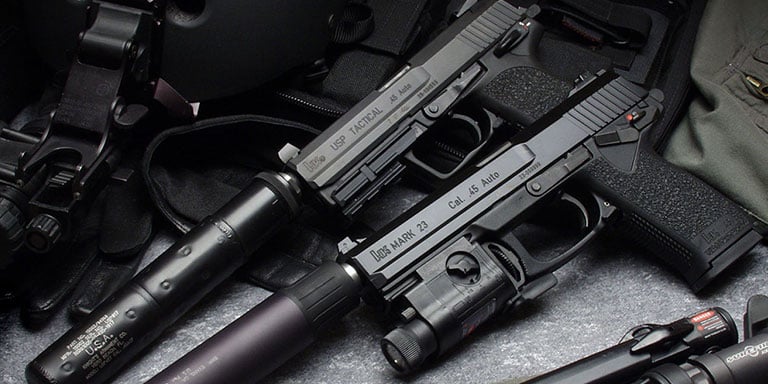
In a hammer-fired model, a (usually external) spring-loaded hammer strikes the firing pin from a cocked position when the trigger is pulled. The hammer is cocked either manually or by the recoil of the slide after firing. The hammer can be manually decocked, but depending on the gun, it may be possible to accidentally fire the gun while attempting to decock it.
Striker-Fired Guns
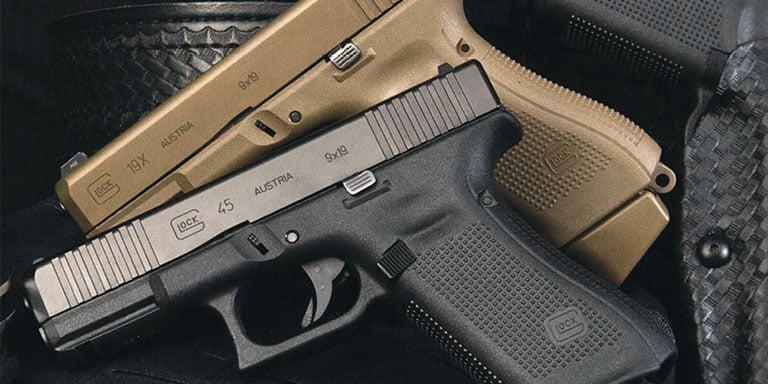
Whereas hammers are almost always external, strikers are internal by definition. A striker is a simple metal rod that, like a hammer, is held back by a spring when it's ready to fire. Unlike a hammer, a striker usually can't be manually cocked; it does so automatically when the slide is pulled to the rear. The only way to release the striker is to pull the trigger.
The terms “hammer-fired” and “striker-fired” are distinct from those that describe the action of a handgun:
- A single-action gun is one in which the trigger performs only one mechanical action: the release of the hammer or firing pin from its “ready to fire” position. To make the gun ready to fire, the shooter must perform some other action, usually either racking the slide or cocking the hammer. Squeezing the trigger will not cause the gun to fire if the hammer or striker is not already in the correct position.
- A single/double-action gun (more commonly referred to simply as “double action”) is one in which the rearward movement of the trigger can perform either one or two mechanical actions, depending on whether the user has already cocked the hammer or striker. If this hasn't been done, a single trigger pull can both cock and release the hammer or striker (although this will make the trigger pull longer and heavier).
- A double-action-only (DAO) pistol is one that cannot be pre-cocked by the user. Squeezing the trigger always performs two mechanical actions: cocking and then releasing the hammer or striker. These models have long, heavy trigger pulls that can't be shortened or lightened.
Hammer-fired and striker-fired guns can both have any type of action. Granted, some configurations are more common than others.
Hammer-fired pistols are almost always either single-action (less common) or double-action (more common). Hammer-fired DAO guns do exist but are somewhat rare. Typically, such guns have hammers that sit flush with the gun's frame and therefore can't be manually manipulated.
Striker-fired pistols are usually double-action or DAO, depending largely on how you want to define “an action that the user must perform.” On the vast majority of such pistols, the rearward movement of the slide automatically cocks the striker, resulting in shorter, lighter trigger pulls after the first one. For this reason, most people describe these guns as double-action for convenience, even though the term is somewhat ambiguous in this case. If a striker-fired pistol's trigger cannot be shortened or lightened, then it's DAO.
Single-action striker-fired pistols (those that allow the user to directly cock or decock the striker) are very rare; the H&K P7 is one example.
Pros and Cons of Hammer-Fired Pistols
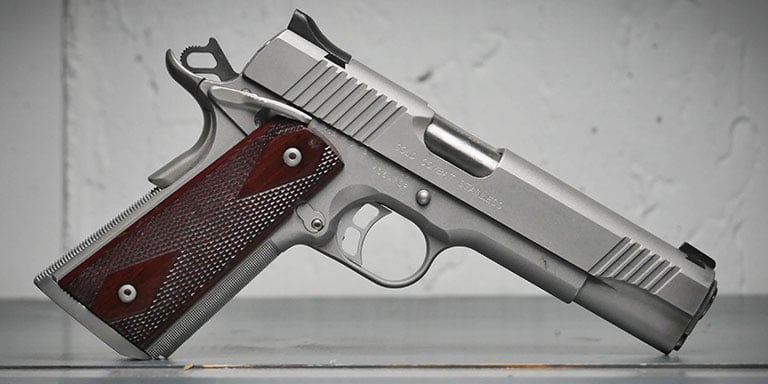
Most of the pros and cons of hammer-fired pistols come down to personal preference. Theoretically, these differences could be significant in a life-or-death situation, but they're rarely that important.
Easy visual/tactile indication of weapon status
When an external hammer is cocked, there's little doubt that the weapon is ready to fire. Some (but not all) striker-fired models have red dots that appear only when the weapon is in condition red, but these are still less obvious than a hammer.
Better triggers
As a very broad generalization, hammer-fired handguns tend to have triggers that are lighter, smoother, and more crisp than their striker-fired counterparts.
Heavier and more solid construction
Again, we're generalizing, but hammer-fired pistols are more likely to be made entirely of metal, giving them a heftier feel. Whether you consider this a pro or a con is also personal preference.
External safeties
These kinds of guns are more likely to have extra safety mechanisms which, again, is a contextual preference.
Pros and Cons of Striker-Fired Pistols
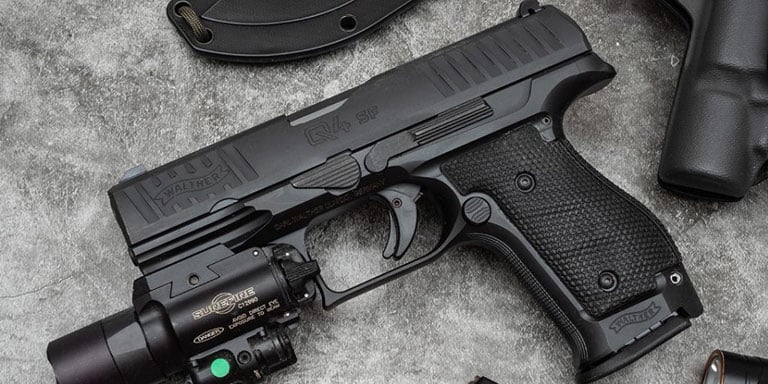
Just like hammer-fired guns, striker-fired models have their own situational pros and cons.
Smaller and lighter
Some people prefer the feel of a gun made of solid metal, but others prefer a subtler, more lightweight polymer frame that may be easier to conceal. Some hammer-fired pistols have non-metal frames too, but they're less common.
Mechanical simplicity
This varies widely from one model to another, but striker-fired pistols tend to have fewer parts, making them easier to disassemble, clean and modify.
Affordability
Provided you can make a truly apples-to-apples comparison, striker-fired handguns tend to be a little bit less expensive.
Speed
All else being equal, an experienced shooter can draw and fire a striker-fired pistol up to 20% more quickly, according to some studies. This is because they have no hammer to manipulate, no hammer to get caught on your shirt as you draw, and (usually) no external safety to worry about. Of course, carrying a gun with no external safety makes it even more important for the shooter to practice excellent trigger discipline at all times, especially while drawing and holstering.
Which Is Best for Me?
Ultimately, whether you choose to carry a hammer-fired or striker-fired handgun depends on what you're most comfortable with. For most people, the choice is a less important one than whether to carry a revolver or a semi-automatic.
Overall, striker-fired pistols tend to be slightly better combat and personal-defense weapons because of their superior speed and simplicity. Partly for that reason, a majority of law enforcement agencies around the world have adopted them. However, if you prefer a hammer-fired handgun and are willing to put in a little extra training, it's entirely possible to mitigate or eliminate its minor disadvantages.
Hammer-fired and striker-fired pistols are both great; there's no universally right or wrong way to go. There's no better teacher than experience, so if you're still unsure which is best for you, visit a gun range and rent a few of each.
Did you find this article helpful?



